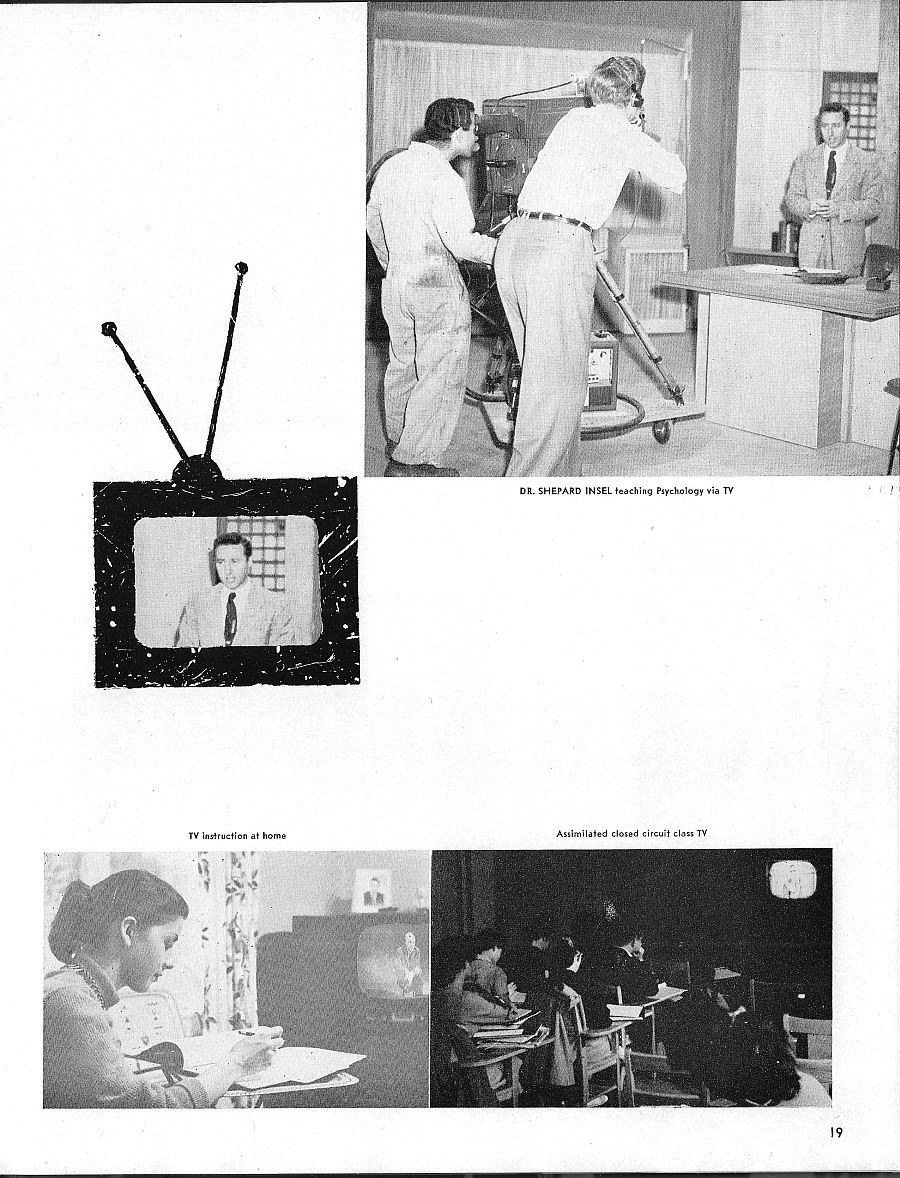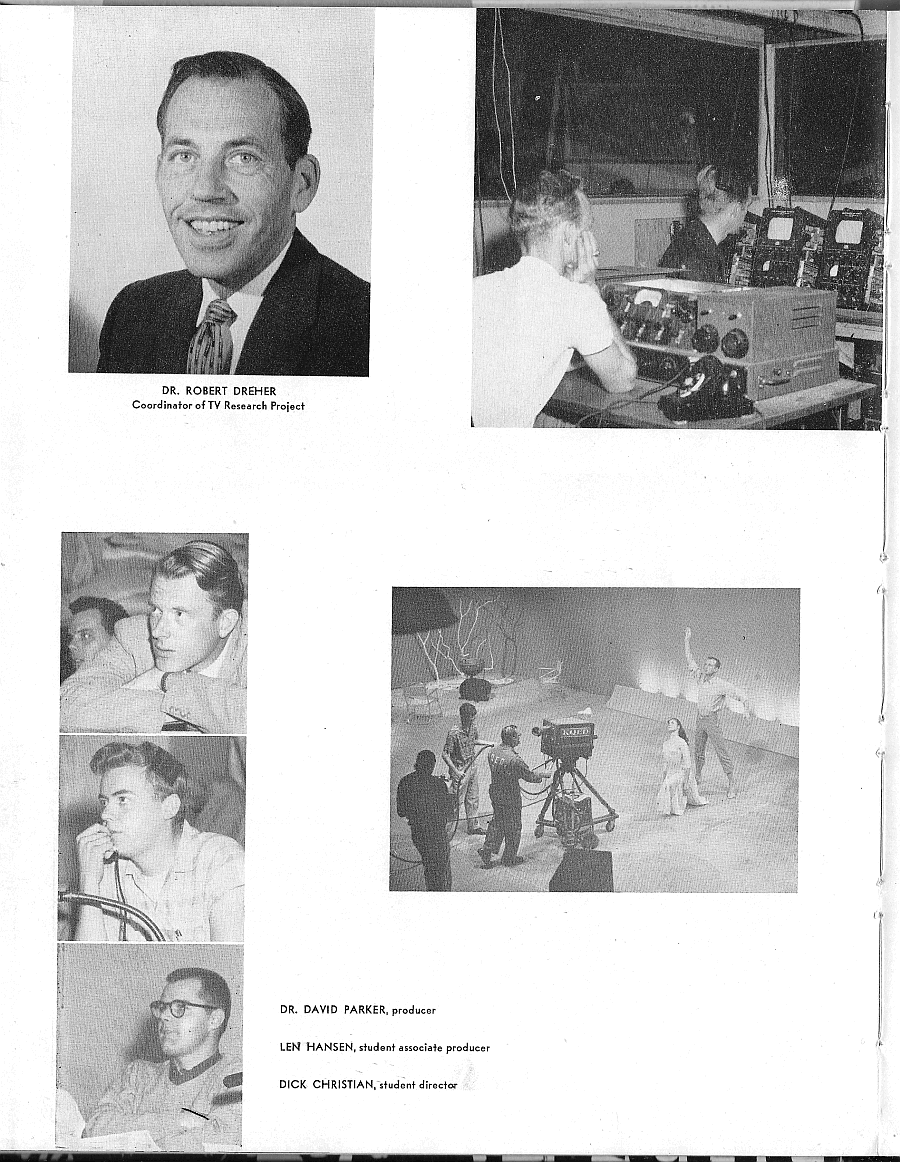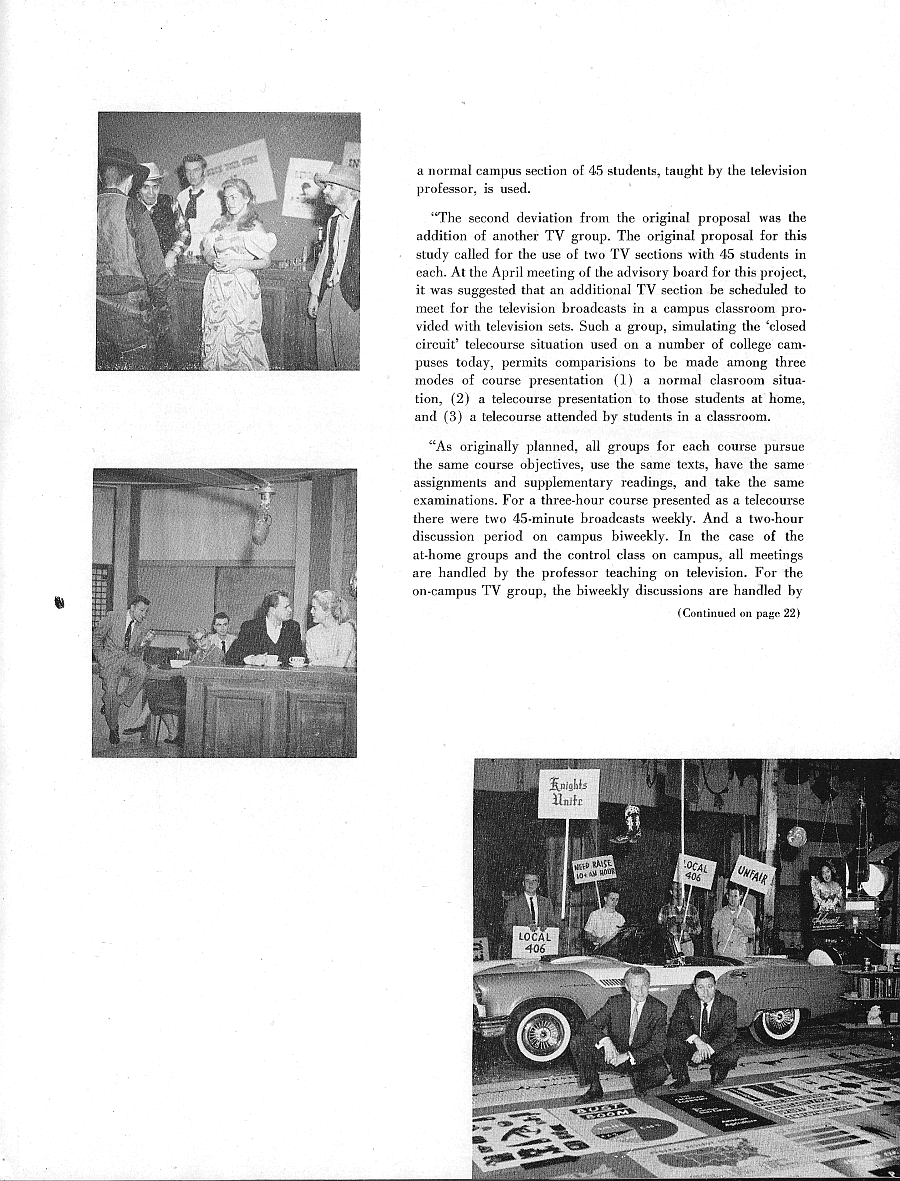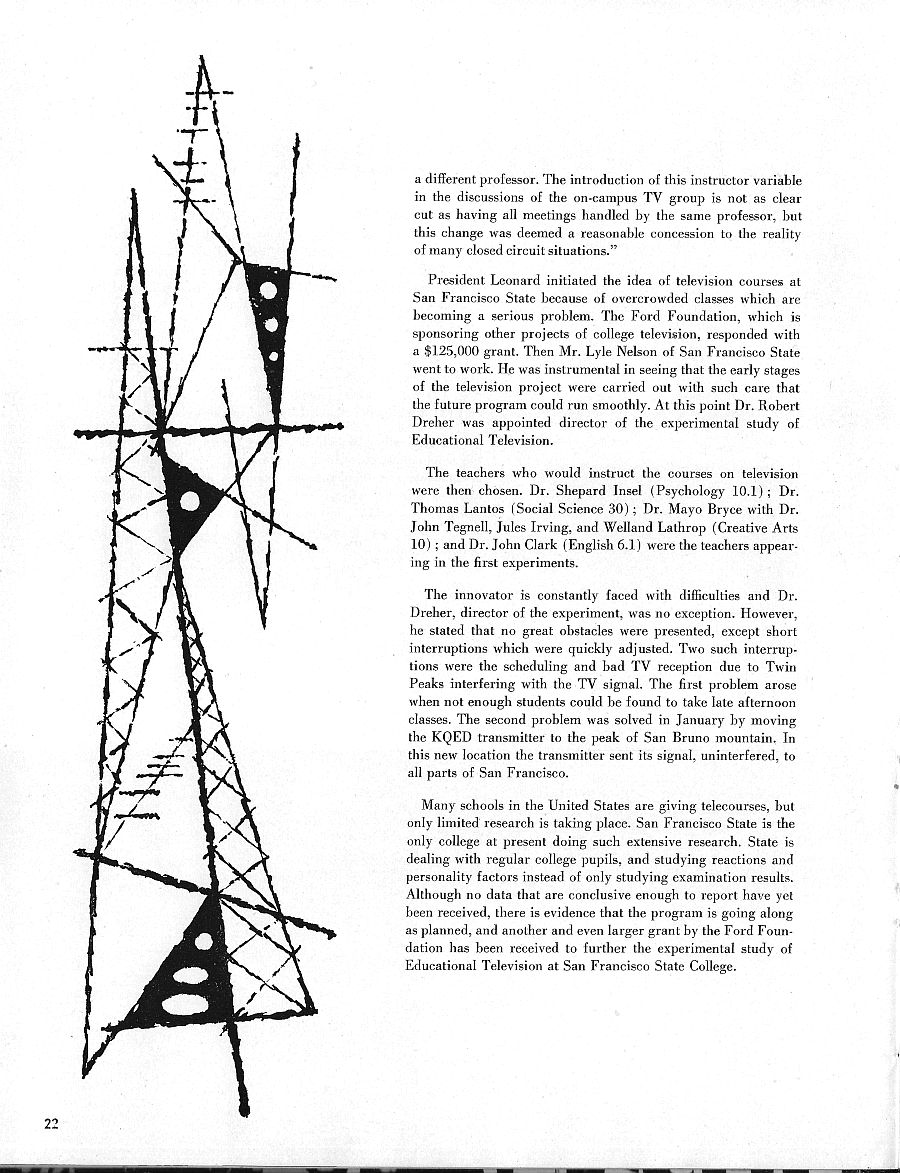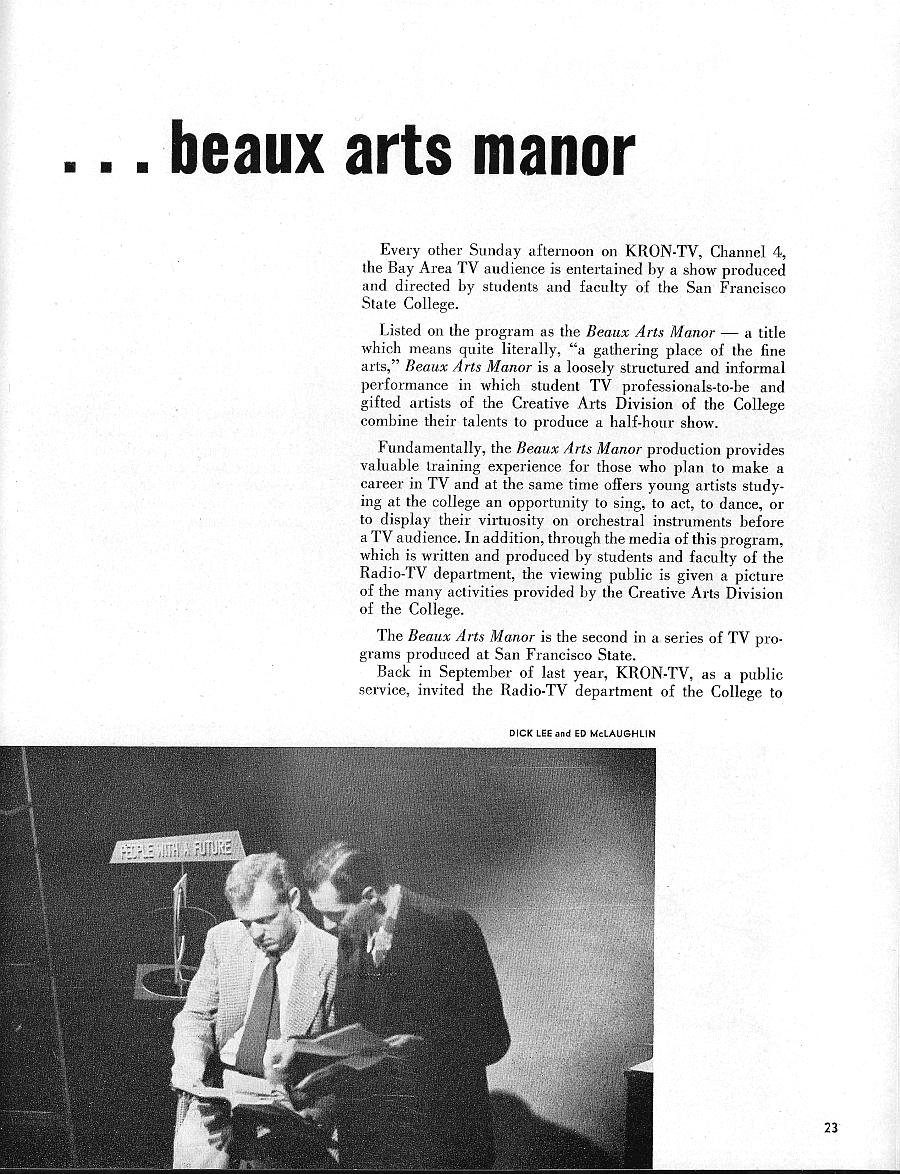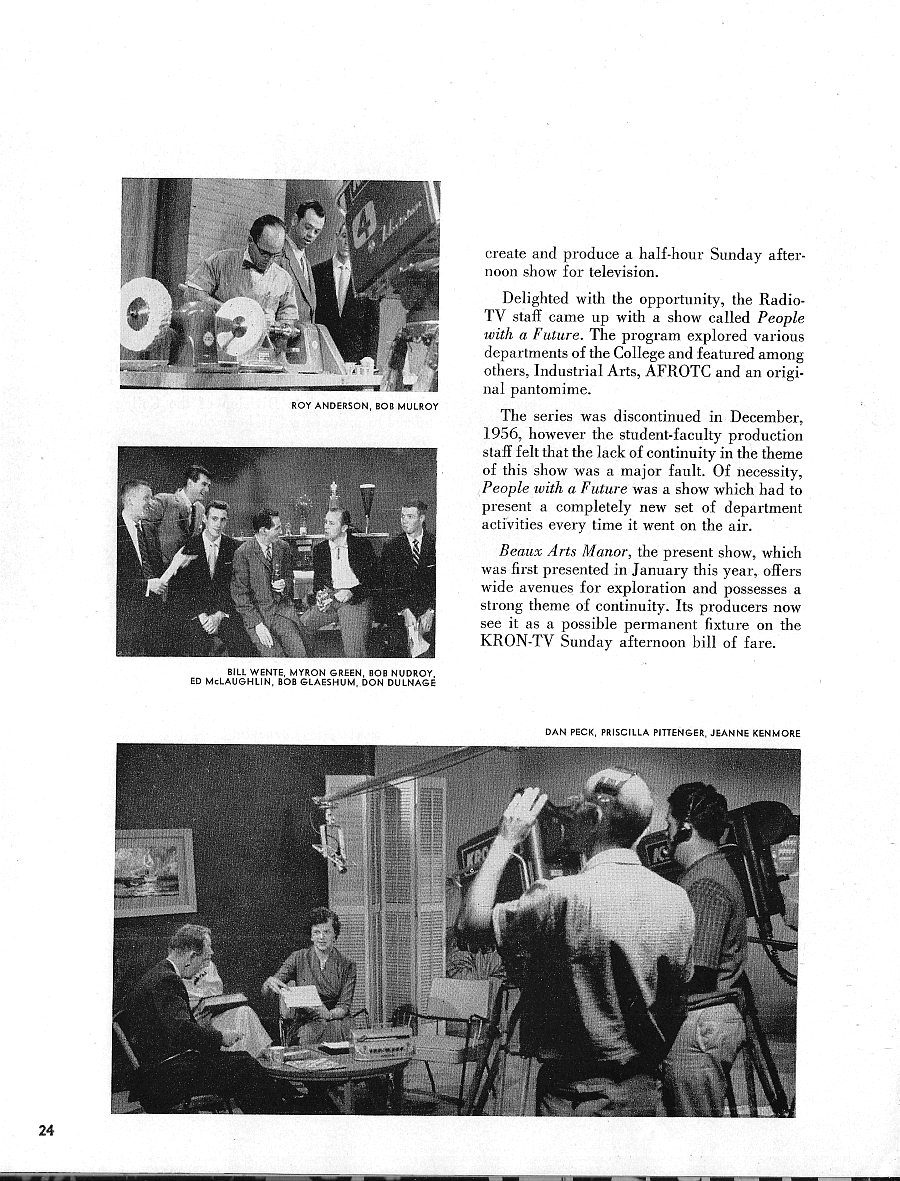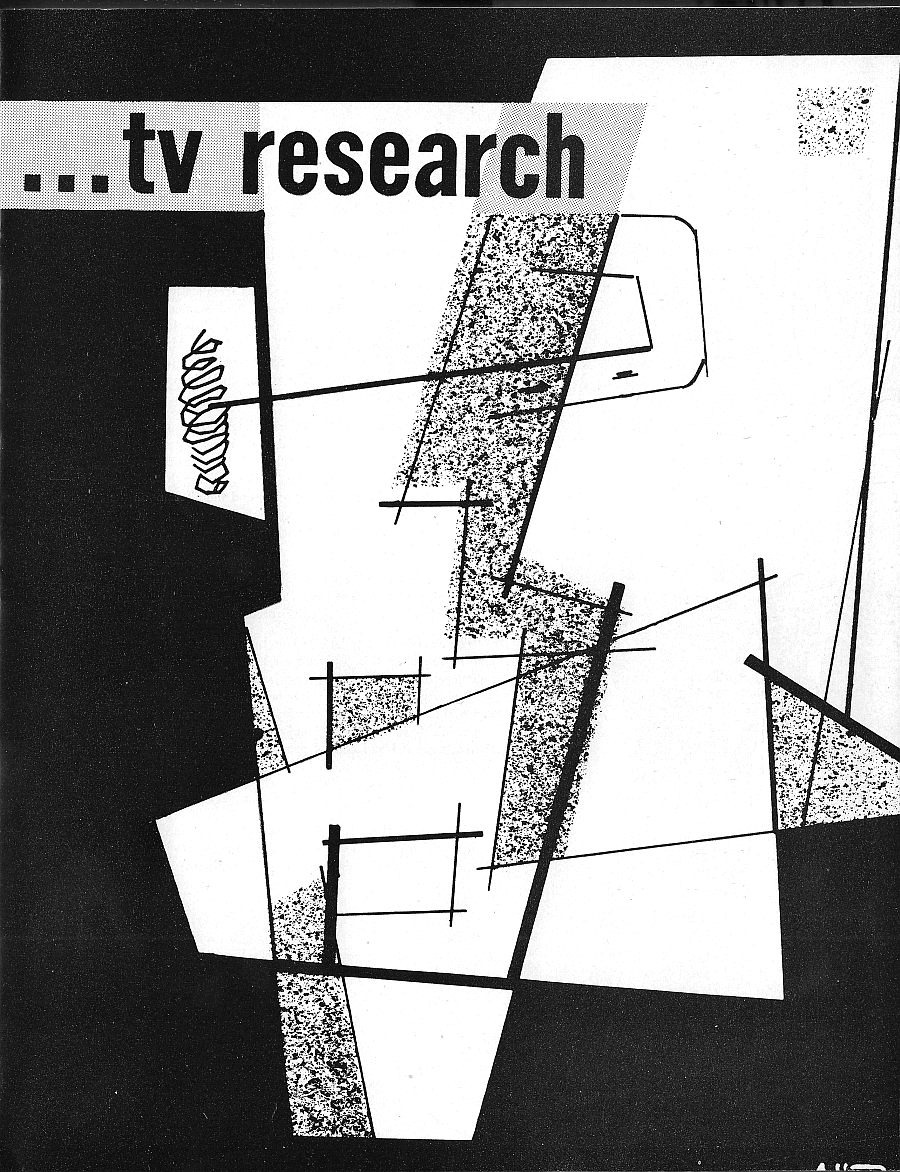
|
|
|
TV RESEARCH From 1957 FRANCISCAN San Francisco State College
|
22 a different professor. The introduction of this instructor variable in the discussions of the on-campus TV group is not as clear cut as having all meetings handled by the same professor, but this change was deemed a reasonable concession to the reality of many closed circuit situations." President Leonard initiated the idea of television courses at San Francisco State because of overcrowded classes which are becoming a serious problem. The Ford Foundation, which is sponsoring other projects of college television, responded with a $125,000 grant. Then Mr. Lyle Nelson of San Francisco State went to work. He was instrumental in seeing that the early stages of the television project were carried out with such care that the future program could run smoothly. At this point Dr. Robert Dreher was appointed director of the experimental study of Educational Television. The teachers who would instruct the courses on television were then chosen. Dr. Shepard Insel (Psychology 10.1); Dr. Thomas Lantos (Social Science 30) ; Dr. Mayo Bryce with Dr. John Tegnell, iules Irving, and Welland Lathrop (Creative Arts 10) ; and Dr. John Clark (English 6.1) were the teachers appear· ing in the first experiments. The innovator is constantly faced with difficulties and Dr. Dreher, director of the experiment, was no exception. However, he stated that no great obstacles were presented, except short interruptions which were quickly adjusted. Two such interrup tions were the scheduling and bad TV reception due to Twin Peaks interfering with the TV signaL The first problem arose when not enough students could be found to take late afternoon classes. The second problem was solved in January by moving the KQED transmitter to the peak of San Bruno mountain. In this new location the transmitter sent its signal, un interfered, to all parts of San Francisco. •• Many schools in the United States are giving telecourses, but only limited research is taking place. San Francisco State is the only college at present doing such extensive research. State is dealing with regular college pupils, and studying reactions and personality factors instead of only studying examination results. Although no data that are conclusive enough to report have yet been received, there is evidence that the program is going along as planned, and another and even larger grant by the Ford Foun dation has been received to further the experimental study of Educational Television at San Francisco State College. • • . beaux arts manor Every other Sunday afternoon on KRON-TV, Channel 4, the Bay Area TV audience is entertained by a show produced and directed by students and faculty of the San Francisco State College. Listed on the program as the Beaux Arts Manor - a title which means quite literally, "a gathering place of the fine arts," Beaux Arts Manor is a loosely structured and informal performance in which student TV professionals-to-be and gifted artists of the Creative Arts Division of the College combine their talents to produce a half-hour show. Fundamentally, the Beaux Arts Manor production provides valuable training experience for those who plan to make a career in TV and at the same time offers young artists study ing at the college an opportunity to sing, to act, to dance, or to display their virtuosity on orchestral instruments before a TV audience. In addition, through the media of this program, which is written and produced by students and faculty of the Radio-TV department, the viewing public is given a picture of the many activities provided by the Creative Arts Division of the College. The Beaux Arts Manor is the second in a series of TV pro grams produced at San Francisco State. Back in September of last year, KRON-TV, as a public service, invited the Radio-TV department of the College to DICK LEE and ED McLAUGHLIN 23 ROY ANDERSON, BOB MULROY BILL WENTE, MYRON GREEN, BOB NUDROY, ED McLAUGHLIN, BOB GLAESHUM, DON DULNAGE create and produce a half-hour Sunday after noon show for television. Delighted with the opportunity, the Radio TV staff came up with a show called People with a Future. The program explored various departments of the College and featured among others, Industrial Arts, AFROTC and an origi nal pantomime. The series was discontinued in December, 1956, however the student- faculty production staff felt that the lack of continuity in the theme of this show was a major fault. Of necessity, People with a Future was a show which had to present a completely new set of department activities every time it went on the air. Beaux Arts Manor, the present show, which was first presented in January this year, offers wide avenues for exploration and possesses a strong theme of continuity. Its producers now see it as a possible permanent fixture on the KRON-TV Sunday afternoon bill of fare. DAN PECK, PRISCILLA PITTENGER, JEANNE KENMORE 24 |
